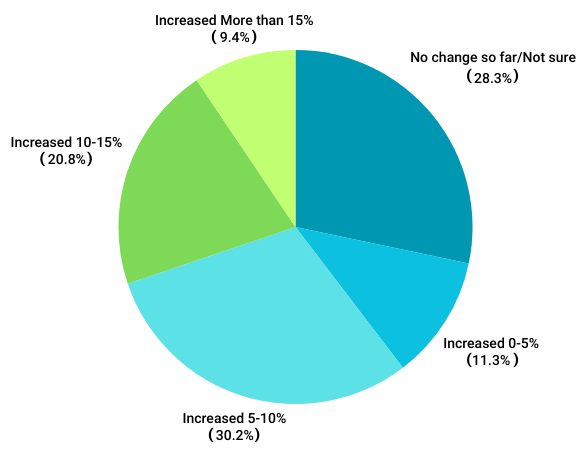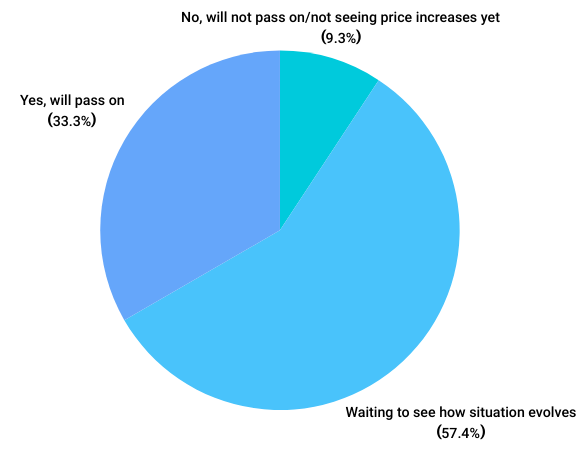Global trade shifts are beginning to touch the floral industry, with new tariffs on items like fresh flowers, vases, and packaging supplies leading to rising costs. While some of these changes are beyond our control, the way you adapt can help your business stay strong and thrive through it all.
How Are Florists Responding to Tariffs?
To better understand how florists are navigating these changes, we surveyed a group of retail flower shop owners across the U.S. Here’s what they had to say:
How much are your floral wholesalers increasing flower prices on average?


Anything else you want to add about your tariff related plans?
Combining a thoughtful, customer-focused strategy with the right tools, you can protect your bottom line and keep customers coming back—even in the face of rising costs.
Floranext understands that every floral business owner is unique, and we’re so excited to share our fantastic new feature: New Product Markup! This tool is ideal for florists wanting to tweak their pricing to handle those new tariff fees.
The best part? You get to decide how and if you want to use it! We’re right here to support you with floral software every step of the way. Let’s work together to make your floral business even more fabulous!
1. Understand What Floral Products Are Being Affected
The first step? Get a clear picture of what in your supply chain is subject to the new tariffs. Some of the most common items affected include:
Imported fresh flowers from South America, such as roses and carnations
Ceramic vases and glassware often sourced from China or other tariff-impacted regions
Packaging materials like cellophane wraps, ribbons, and floral foam
Take stock of your inventory and identify where price increases are hitting hardest. This will help you make smarter pricing decisions and sourcing choices going forward.
2. Talk to Your Floral Suppliers
Don’t go it alone—your wholesalers and importers are navigating these changes too. Start a conversation and ask:
Are these price increases temporary or long-term?
Are there alternative products or domestic suppliers that aren’t affected by tariffs?
Can you lock in pre-tariff pricing by placing larger or more frequent orders?
Building stronger relationships with your suppliers can lead to better pricing, faster communication, and more flexible options when things shift.
3. Communicate To Your Floral Customers
Honesty builds trust. Be proactive (and gentle) when explaining changes to your customers. This could mean:
A small sign near the register
A note in your web checkout process or order confirmation emails
A message on receipts, such as:
“Due to increased import costs, you may notice a small surcharge on select items. We appreciate your understanding as we continue to provide the best quality and service.”
When customers understand the why, they’re more likely to stick with you.
—
Tariffs are out of your hands—but your strategy isn’t. By staying informed, working closely with suppliers, and communicating clearly with customers, you can handle rising costs with grace and confidence.
And remember—if you’re using Floranext, tools like the Product Margin feature are designed to help you adjust quickly and keep your business profitable.
Florists, we’d love to hear from you—please share your thoughts or questions about the recent tariffs affecting the floral industry in the comments below!

